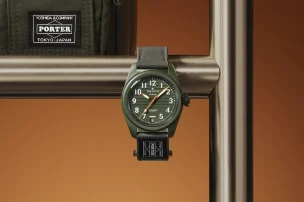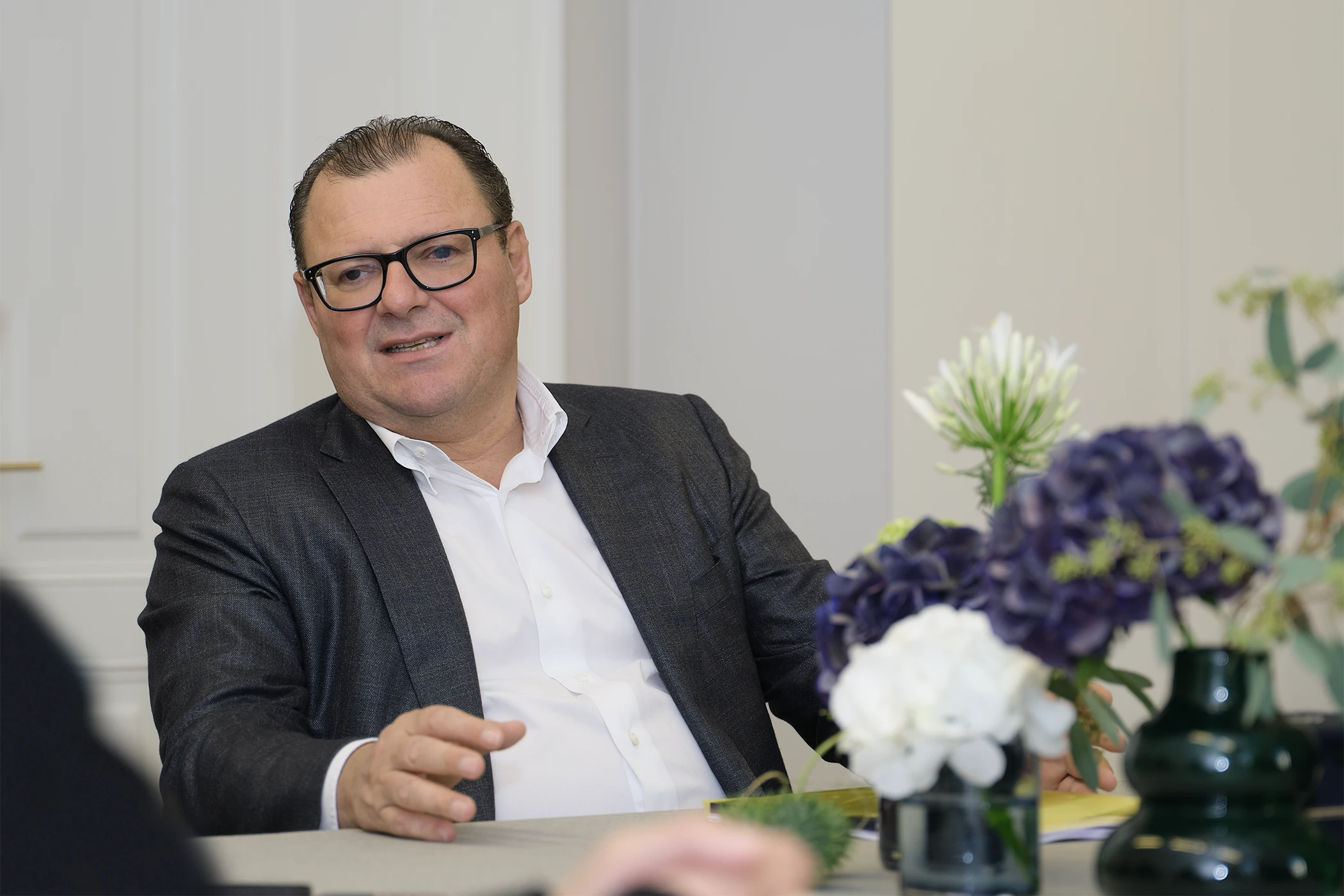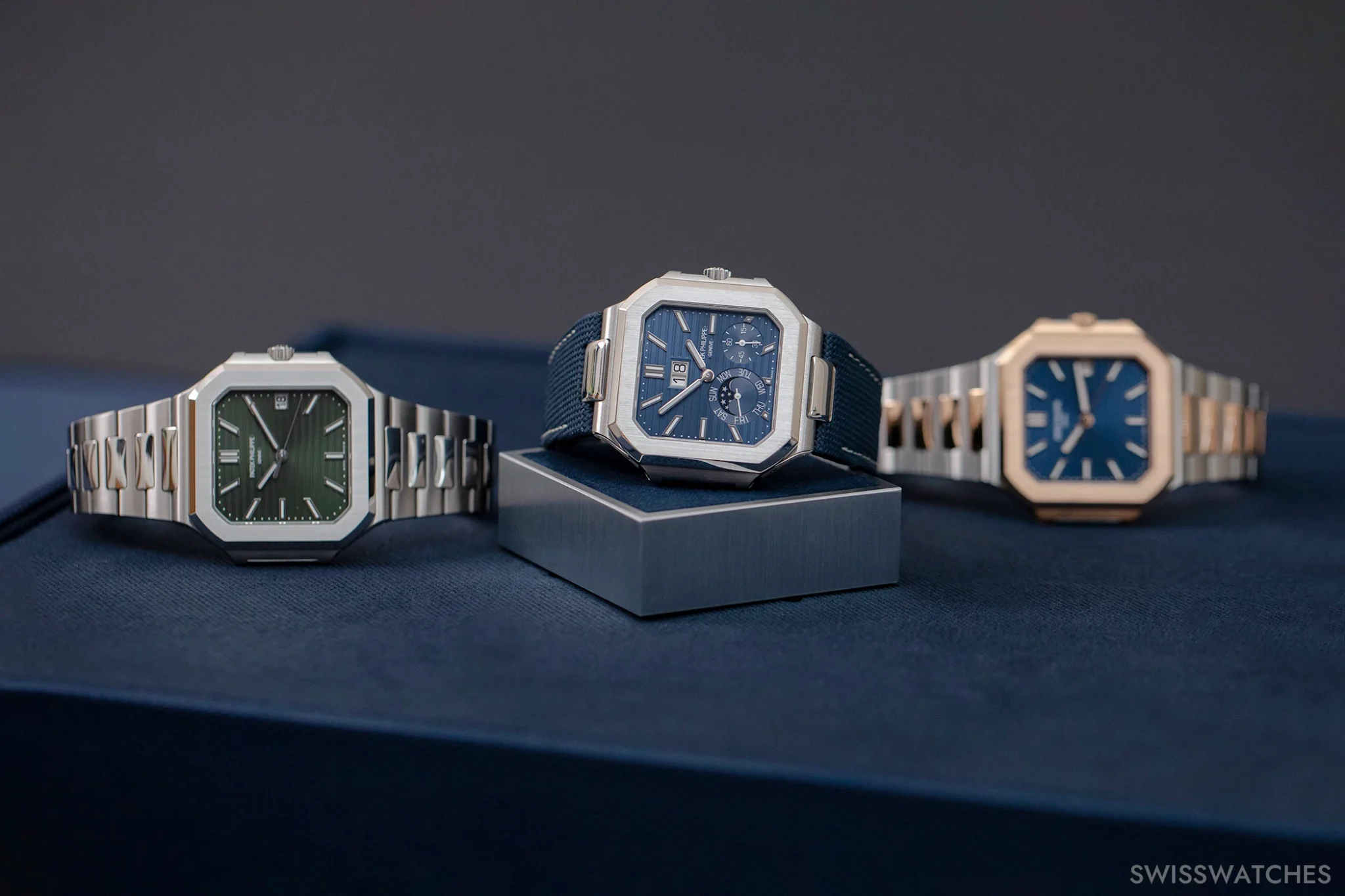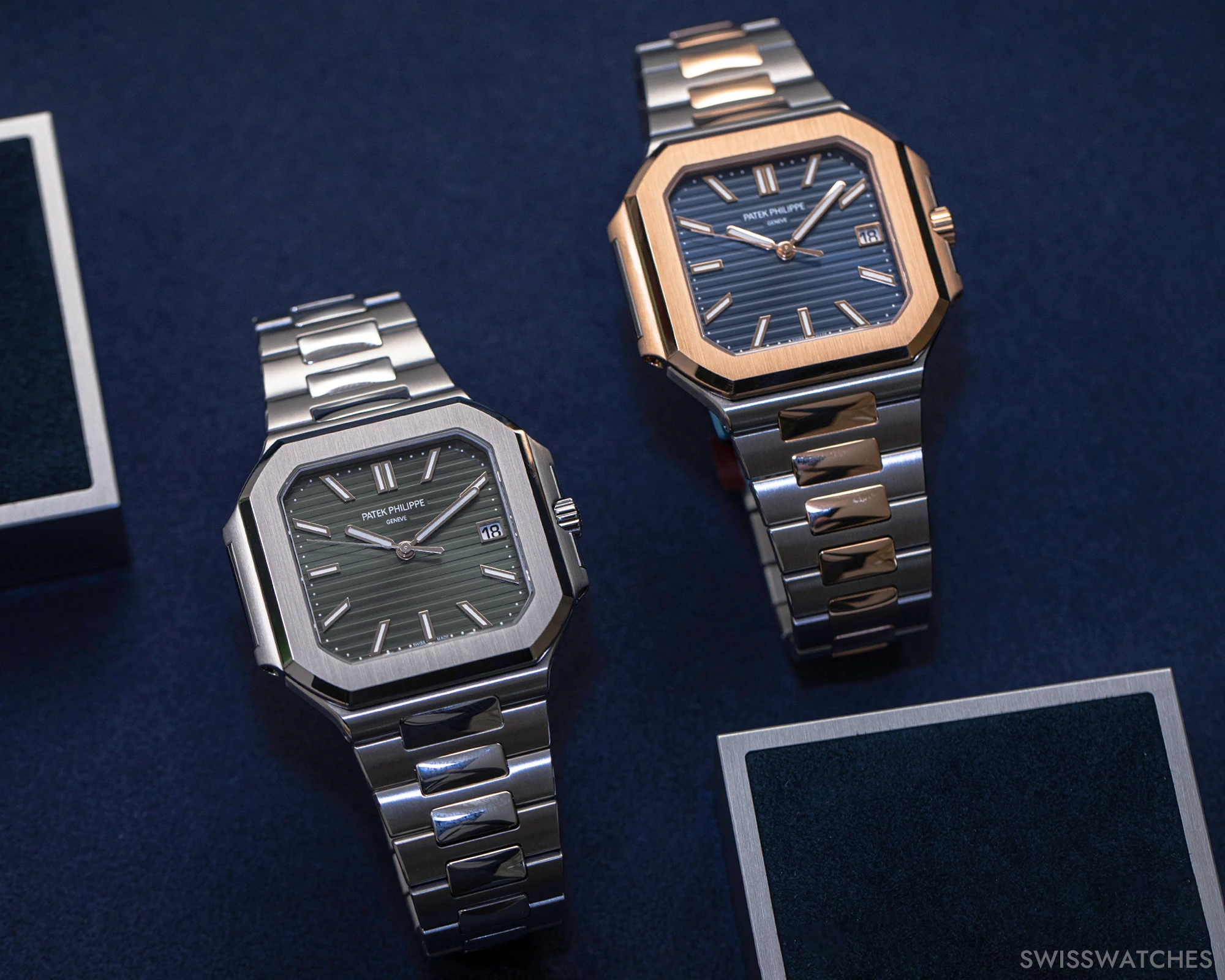Discover the Zenith x Porter Pilot, a collaboration between Zenith and the Japanese brand Porter featuring two watches in khaki ceramic limited to 500 pieces each.


First of all, congratulations. Having a launch like this after 25 years is something very, very special. What does the launch of this watch mean to you?
Thierry Stern: Well, for me, it’s always exciting, because, as you mentioned, it’s not something that happens often. Of course, launching a new family is part of life, but it’s not something we do every year. So, it’s a very exciting moment. You never quite know what’s going to happen. I mean, yes, we are professionals, we’ve done our homework and tested everything, so we’re confident the product will work. But more importantly, it’s always a pleasure – at least for me today, just as it was for my father back then – to launch an entirely new family. I remember the Twenty-4; I was there. At the time, it was perhaps more my father sitting here, explaining the story behind it. Now, it’s my turn. This time, with the Cubitus, it’s a very interesting line.

The new Cubitus collection: 5821-1A-001, 5822P-001, 5821-1AR-001
You know, we could create new watches every year, and in fact, that’s exactly what we do. On average, we release 15 to 20 new models annually. This time, we’re presenting three new models, but they are part of a new family because the style has been clearly defined, and the strategy behind it has been carefully considered. As you can imagine, there are many more ‘siblings’ and ‘cousins’ already in the pipeline for this collection. So, I think it’s an exciting move, but it’s not unusual – it’s just something we don’t do every day. However, it’s part of Patek Philippe’s role to bring new members into the family, as it has always been, whether with the Calatrava, the Nautilus, or others. So yes, I’m proud to be part of it.
I remember designing the Twenty-4 myself, back when I was working in creation. Now, as a president, the task is different – and to be frank, it’s fun. That’s the most important thing. You cannot create something like this if you don’t enjoy it. For me, that’s key – we must enjoy what we do. We are an independent watchmaker; we do what we believe is right for the brand. And most importantly, I always aim to surprise people. When you expect me to go one way, I go another.
You’ve always wanted to create a square watch, but was there a particular moment when you thought, ‘Now is the time to embark on this journey’? Can you recall?
Thierry Stern: Yes, it’s true. I have always enjoyed square watches, but I would say more in the sporty line. While I could have worked on the Calatrava line, with something square, that could have been quite nice. However, to be frank, my idea was more about wanting a slightly sportier line. Initially, it wasn’t possible; we didn’t have the time, and it perhaps wasn’t the right moment to pursue it. I don’t think there is a definitive point where one says, ‘Now is the time.’ No, I believe the greatest advantage for me is that once you become president and gain a bit more experience, you can confidently say, ‘Now I’m willing to create my square watches.’ So, we’re going to do it.
As I mentioned before, I like to surprise people. So, yes, it wasn’t in the plan; it wasn’t something we had really discussed or received market feedback on. But I said, ‘Now I’m ready.’ And perhaps because I’ve matured a bit and became a little tougher, I felt more inclined to say, ‘Let’s do it now.’ The beauty of Patek is that we don’t simply follow a marketing brief and leave it at that. We do things for the pleasure of it, and it was time for me to create this piece.
I believe this is also what people appreciate; they know we’re not merely following figures or analyses. We do what we believe is right, and it’s important to rely on our instincts at times. I thought it was a perfect time, and I had the authority to say, ‘Let’s go ahead with it.’ Most importantly, we mustn’t forget that it was also crucial to introduce a new movement inside. I wanted to integrate it into this family, and I looked at the entire collection of movements I have planned for the future, and identified the movement I needed for my square watch.
I’ve always wanted to feature a larger date, which I find quite appealing. As you know, it’s not a new concept; if you look at A. Lange & Söhne, they’ve had a very large date for quite some time, and I think it’s very cool. This is something I’ve always enjoyed, and I still remember my dad, six years ago, often coming to me or me going to him, showing him a new perpetual or annual calendar. He always said, ‘Increase the size; make the date bigger.’ So, I’ve had that in mind: make a bigger date, something easy to read.
When I examined the movement, I thought, ‘My goodness, this is really the one I should use for it.’ It’s also part of my job. You know how it is for you when choosing the right words for your article? Similarly, I know what I should select to create a strong new watch. I have a vision for Patek’s movements that extends as far as 2039. I have everything lined up, so to speak.
To develop a movement like this typically takes about six years, so it was already in the pipeline before I decided to design the square watch. When I saw it, I thought, ‘Okay, now the timing is perfect. I need four years to design, launch, and produce everything, and the movement will be ready at the same time.’ And that’s how we got here today.
It was challenging, as we started with some designs that were, my goodness, too traditional for me. I wanted to incorporate the brand’s DNA in a sporty way. That was clear in my mind; I insisted we don’t create a conventional square watch; instead, let’s go for a sporty line, utilising the best elements we’ve developed. What have we done that seems to works best? The Nautilus is successful, as is the Aquanaut.
So, I used the brand’s DNA and mixed it to create something new in terms of shape. I’m not always looking to reinvent the world: I aim to create something that people like, and that is our goal. The colour, finishing, and style all derive from Patek, and I have a wealth of assets in that regard. When people claim that I am merely copying the Nautilus, I respond, ‘Of course, I’m drawing inspiration from it.’ I’m reshaping and altering it. It’s easy to say, ‘You’re copying the Nautilus,’ – but please, try starting from a blank sheet of paper and building it up; it’s not that straightforward. While it may look similar, it’s not the same, and you will see that now.
How significant do you envision this new family becoming within your overall portfolio? To what extent do you see it driving sales?
Thierry Stern: Well, sorry, I forgot this is economic. [Laughs] This is where I turn my back on the commercial side. [Laughs again] I know for certain that we had to calculate that. And we certainly had to consider first whether the steel version would also work. Working on the steel version is very exciting but also very complex, as we understand it can be quite significant. However, we also recognise that Patek Philippe is not solely about selling steel. The way we’ve built the brand and the emphasis we’ve placed on the quality and level of our movements mean we must be cautious about relying solely on steel sales. If I were to produce only steel, I wouldn’t survive – that’s a fact.
The complexity of Patek has always been to assert that we are here to create the finest watches in the world. We invest in doing that, focusing on gold, platinum, and all those amazing movements. It comes at a cost, and merely selling steel is not possible. Therefore, we limited the quantity of steel available and decided we should have an entry-level version made of steel, which I agree with. But we also are offering platinum and two-tone options because I knew that otherwise, we wouldn’t have enough pieces. There’s a certain percentage we design for steel.
Jerome Pernici, Commercial and Marketing Director of Patek Philippe adds: Perhaps we can say that this sporty yet elegant segment will account for a maximum of 40 percent of our sales. As Mr. Stern mentioned, we need to offer a variety of styles, including non-sporty options, and we want to maintain that diversity. To return to your question, of course, Cubituswill be positioned alongside Aquanaut and Nautilus. It will draw some production and sales away from Nautilus and will appeal to a different customer base – perhaps a younger audience or those seeking something more prominent on their wrist. The combination of the three collections will contribute to our success.
Thierry Stern: As you may recall, I discontinued the 5711. Everyone thought I was crazy at the time, but looking back now, it was a good decision. Yes, I don’t have shareholders; had I had them, they might have disagreed. However, I must preserve Patek for the long term with this level of quality, as I’ve mentioned, and also uphold the reputation we have for creating watches. It’s not out of fear, you know; it’s what I’m committed to. I have to work to protect Patek for future generations. For example, one of my sons is here to learn, just as I did in my time. It’s vital that he understands the need for evolution. We should not become fixated on a single product, as in ten years, people might say, ‘I already have a few Nautilus watches; I’m not going to buy more.’ As a true watchmaker, your goal is to create new watches. That’s what I love, and that’s what I will continue to do and pass on.
Was the next generation also involved in the process of the Cubitus?
Thierry Stern: With that one, it was a bit too late. We started four years ago, so he was not involved in the process. I showed the results to my sons, but they couldn’t influence the design, as it was already completed. So, in that regard, no. However, they will be happy to wear it. [Chuckles]
My impression – and that of many others – is that there has been a noticeable quietness in the market when it comes to launching new watch collections. It doesn’t always work out. Why are you confident that something similar won’t happen to Patek Philippe?
Thierry Stern: Because I feel it. [Laughs] I cannot be 100 percent confident; you are absolutely right. I wish I could be, but it’s not possible.
We are quite creative at Patek; we have 140 models in our collection, with many different sizes, colours, shapes, dials, and bracelets. This diversity helps because people are accustomed to seeing new models from Patek.
Then there’s also this feeling I mentioned having. For example, take the new tourbillon minute repeater with the retrograde date – the Reference 5316. I designed a new sapphire dial that allows a glimpse of the inner workings, which was a significant change. I know I can implement such changes. I began with a watch that was 100 percentage traditional with the retrograde function, which hadn’t been a trend. I transformed it into one of the most desirable watches in the world.
After 30 years of experience and my father’s guidance – he was a tough teacher, but he was right – I’ve learned what to do at critical moments. Thank goodness for that. I’m not looking to be aggressive, so please understand me, but I know it’s a nice watch. I’ve been created, trained and mastered by the best in the industry to design watches. If I have a good feeling about it, it should work.
I’ve shared this internally with my team. So, we decided to proceed. Will I put my life on the line for it? No, I won’t. But to be frank, I am very confident. You know how it goes – initially, people will complain, and then it will take off again. We’ve seen this with the Aquanaut and the Twenty-4. It’s quite normal.
Why ‘Cubitus’? Where does the name come from?
The first thing I decided before we began the initial sketches was the name: Cubitus. Don’t ask me why that came to mind; it has a cube shape. The name also resonates with Nautilus, and I like the sound of it. I can pronounce it in German, French, and English. So, I went with Cubitus – it was the first name we settled on, and it wasn’t used by anyone else, so I was happy. I don’t know what your thoughts are, but it’s a straightforward name that people can easily remember.
You just mentioned that the target group is likely younger people who prefer more prominent watches on the streets. Did you also consider Generation Z or conduct any market research before launching a collection like this, or is everything primarily based on your personal feelings?
Thierry Stern: We didn’t conduct extensive market research, but our creation team consists of four people: myself, Eric [Fague], who leads creation and took my place when I became president so we’ve worked together for many years, Jerome Pernici, who heads the commercial side, and Patrick Cremers, who oversees the Geneva store. This means that inside this team, I had access to knowledgeable individuals who understand analysis, figures, and public feedback. So, while I would say there wasn’t any specific market research, I had a team of experts who could advise me – and us as a team – as we worked on this. This is one of the strengths of Patek Philippe: the people involved are deeply committed to the product. Jerome, for instance, has a comprehensive understanding of the market, including all the figures, clients, and analyses, which is far more valuable than just reading reports. I have someone who can explain everything to me, and we leverage our collective knowledge to make informed decisions.
One more question about the design. I mean, the dial design has a very strong inspiration from Nautilus with the horizontal lines. Why take inspiration from the Nautilus and why not create something new on the dial?
Thierry Stern: As I mentioned, in creating a sporty line, I’ve used the best resources available to me at Patek. I’ve tried various dials, but none resonated with me as powerfully as the Nautilus dial, with its distinctive stripes. It’s so nice and so strong, I wondered why I shouldn’t use it. This isn’t a copy; it’s an expression of my own design language. If I were to copy another brand, I wouldn’t have pursued this direction in the first place, and I would accept that criticism. However, this is my own design. Really, it is. So, that’s what I’m using.

The same principle applies to many other watches. The challenge lies in knowing how to incorporate elements effectively. Sometimes, in the pursuit of something new, there’s a risk of straying too far from the target simply due to personal ego, and that’s something we do not have at Patek. There is no ego; we carefully consider our choices. We recognised that we needed to leverage our expertise to create a dial like this, and not everyone has the capability to produce such work. The know-how behind a dial like this is exceptional. I think many of you may have visited our dial factory, and if you haven’t, I hope you get the chance to. Witnessing the complexity involved in creating such a dial will give you a real appreciation of what it takes. For me, this embodies Patek Philippe and I like it, and that’s why I chose to incorporate it.
Out of the entire production, those 72,000 rumoured watches per year, does this mean less Aquanaut and Nautilus in production?
Thierry Stern: We will need to divide the 40 percent share between the Nautilus, Aquanaut, and Cubitus collections. This means more challenges for retailers and for us. However, I believe there will also be individuals who are eager to transition from their current sporty watch preferences to this new one. Yes, there will undoubtedly be difficulties, but this has always been the case.
I’m not a mass producer; my only aim is to create the finest products in the world. As I often say, quantity and quality don’t get along. I am sorry to those who have been waiting, but there’s little more I can do, and I refuse to rush the process. This hasn’t simplified my life; believe me, the production team doesn’t always appreciate my approach – though I can’t say they dislike me. [Laughs] They would be justified in saying, ‘This isn’t a gift that you’ve given us.’
The complexity of the case is significant, but that’s also what makes it important. I don’t want to see another brand copying me and producing something identical. By taking this approach, with all the finishing involved, it will be quite challenging for others in terms of know-how, and it comes at a certain cost. Patek Philippe customers accept this because they understand our vision and direction.
I hesitate to phrase it this way, but when clients purchase a watch, they often tell me they are ‘investing’ in a Patek Philippe rather than ‘buying’ one. This can be a bit scary for me, but as long as they are wearing the watch, I’m comfortable with it. I appreciate that they believe in me, in the brand, and in the watch’s value, which they expect to remain stable or even increase over time. However, when it comes to customers who say they are investing but keep the watches stored away in safes purely for resale value, that is something I do not like. Unfortunately, I can’t control everything.
Also read our article about everything you need to know about the new Cubitus HERE.